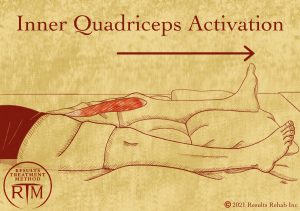Athletes are no strangers to pushing their bodies to the limit. From intense training sessions to competitive matches, they often face various challenges and injuries along the way. One common condition that can significantly impact an athlete’s performance is sciatica. Characterized by pain that radiates along the sciatic nerve, sciatica can be debilitating and frustrating. In this Athletes and Sciatica: Returning to Play, we will explore how athletes can manage sciatica pain and successfully return to play.
Understanding Sciatica
Sciatica refers to the pain that originates in the lower back and travels down one or both legs. It occurs when the sciatic nerve, which is the longest nerve in the body, becomes compressed or irritated. Athletes may experience sciatica due to several factors, including herniated discs, spinal stenosis, muscle imbalances, or repetitive stress on the lower back.
Managing Sciatica Pain
Consult with a healthcare professional: If you suspect you have sciatica, it’s crucial to consult with a healthcare professional, such as a sports medicine physician or physical therapist. They can evaluate your condition, determine the underlying cause, and create a personalized treatment plan.
Rest and modify activities: Initially, rest may be necessary to alleviate acute pain. Athletes should avoid activities that exacerbate the symptoms and modify their training routine accordingly. Low-impact exercises like swimming or cycling can provide relief while maintaining cardiovascular fitness.
Physical therapy and strengthening exercises: Physical therapy plays a vital role in managing sciatica. A skilled therapist can guide athletes through specific exercises and stretches to improve flexibility, strengthen core muscles, and correct imbalances. These exercises may include stretches for the hamstrings, piriformis muscle, and lower back. Strengthening the core and gluteal muscles can help support the spine and reduce the risk of future sciatic episodes.
Pain management techniques: Athletes may need to explore various pain management techniques to find relief. These can include the use of ice or heat therapy, over-the-counter pain medications, and non-invasive treatments such as ultrasound or electrical stimulation. However, it’s essential to consult with a healthcare professional before using any medication or treatment option.
Returning to Play
Returning to play after dealing with sciatica requires a gradual and cautious approach. Rushing the process can lead to re-injury and further setbacks. Here are some key steps to consider:
Follow the treatment plan: Adhering to the treatment plan prescribed by your healthcare professional is crucial. Completing the recommended exercises, attending therapy sessions, and following their guidance will optimize your chances of a successful return to play.
Gradual progression: Start by reintroducing low-impact activities and gradually progress to higher-intensity exercises. This allows your body to adapt and regain strength without overloading the affected area. Listen to your body’s cues and adjust the intensity and duration of your workouts accordingly.
Cross-training and injury prevention: Incorporating cross-training activities can help reduce the strain on the affected area while maintaining overall fitness. Engaging in exercises such as swimming, yoga, or Pilates can improve flexibility, promote proper alignment, and reduce the risk of future injuries.
Regular monitoring and communication: Keep in touch with your healthcare professional throughout the recovery process. They can monitor your progress, make adjustments to your treatment plan if necessary, and provide guidance to prevent future occurrences of sciatica.
Results Physical Therapy’s FREE Online Sciatica and Lower Back Pain Workshop
Thank you for reading Athletes and Sciatica: Returning to Play. If you are experiencing lower back pain, Results Physical Therapy is hosting a FREE Online Sciatica and Lower Back Pain Workshop on July 11th from 5:30pm – 6:30pm. This workshop will provide information on the causes of lower back pain and offer practical tips on how to identify the source of your symptoms. The workshop will be led by a master physical therapist with 40 years of experience and is open to anyone who is interested in learning more about lower back pain and improving their quality of life.
To register, visit https://workshops.resultsrehab.com/signup




